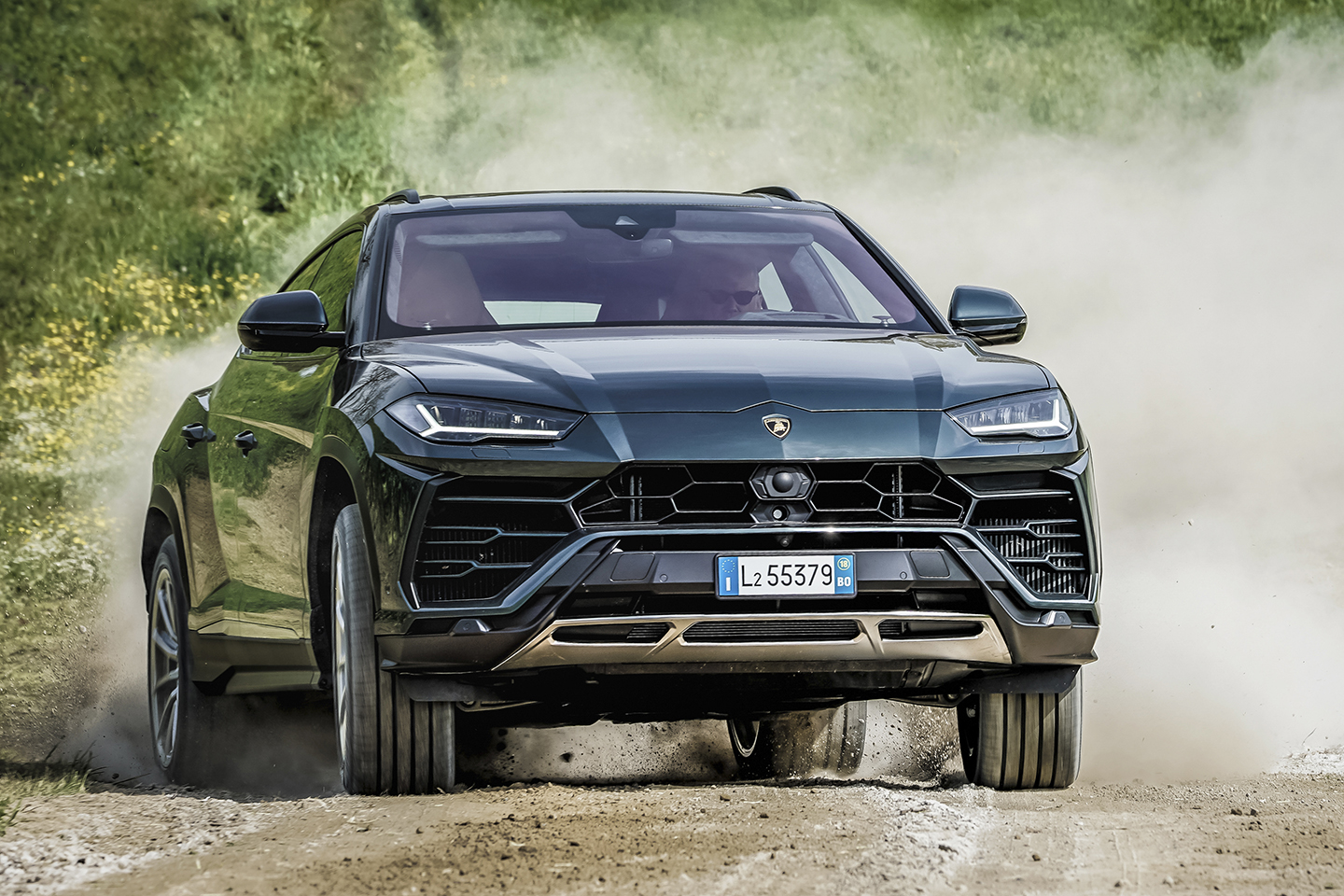Lamborghini Urus | PH Used Buying Guide
Lambo's first SUV is now Sant'Agata's best seller - so there are plenty of used ones around...
Key considerations
• Available for £200,000
• 4.0 V8 petrol twin turbo, all-wheel drive
• Monstrous performance, strong reliability
• Not a classic Lamborghini, but wonderful anyway
• You can tow a caravan with it
• An Audi RS Q8 is much cheaper, but it’s not a Lamborghini
See every Lamborghini Urus for sale
OVERVIEW
What would have seemed less likely ten years ago: a capacity crowd at Wembley for a women’s’ football match, or Lamborghini deciding to build an SUV? If you had managed to stick a grand on either of those two bets in the early 2010s you’d probably be lying on a Maldives beach today.
This is a car website, so let’s leave the footie aside for a minute and cast our minds back to the frosty reception that SUVs in general, and performance SUVs in particular, received from motoring enthusiasts when they first started creeping onto our roads. They really weren’t popular at all until we realised that (a) they were actually pretty useful and (b) that they could be made to go fast. Huge advances in chassis technology took away the last obstacles to performance SUV purchase. By 2018, the year of the Urus’s introduction, the stigma traditionally associated with the genre had been replaced by a fierce desire to own the biggest and most powerful SUVs.
It was an obvious opportunity for one of the world’s highest-profile sporting brands to jump into the pool. Depending on your definition of an SUV, the Urus wasn’t Lamborghini’s first entry onto the SUV scene. That would have been the LM002 of 1986, powered by either the regular 5.2 litre or the 7.2 litre marine version of the Countach V12. That vehicle had itself been previewed five years earlier by the LM001 prototype, an evil-handling lump featuring an AMC 5.9-litre V8 mounted in the rear, so you could say that Lamborghini was ahead of its time even if the driving reality and useability of those LMs were anything but forward-looking.
Lamborghini’s absorption by Audi in 1998 meant that the Urus SSUV (Super Sport Utility Vehicle) wouldn’t be saddled by ill-considered design ideas or shonky componentry. On the contrary, it benefitted fully from the sensible roominess of the Touareg platform combined with the Audi’s group’s very best engine and chassis tech, which in this case meant the hot-vee twin-scroll twin-turbocharged 4.0 litre FSI V8 as seen in the Porsche Cayenne Turbo and the Audi RS Q8 (more on that in a moment), mated to a ZF 8-speed torque converter automatic transmission with launch control in Corsa mode. There was a central Torsen differential offering 60 per cent rear-biased torque delivery in regular driving, going up to 87 per cent available when conditions allowed, plus a welter of driver aids. It was all packaged up in a brand-appropriate (i.e., dramatic) body and interior with a choice of regular or more personalised Urus Pearl Capsule specs.
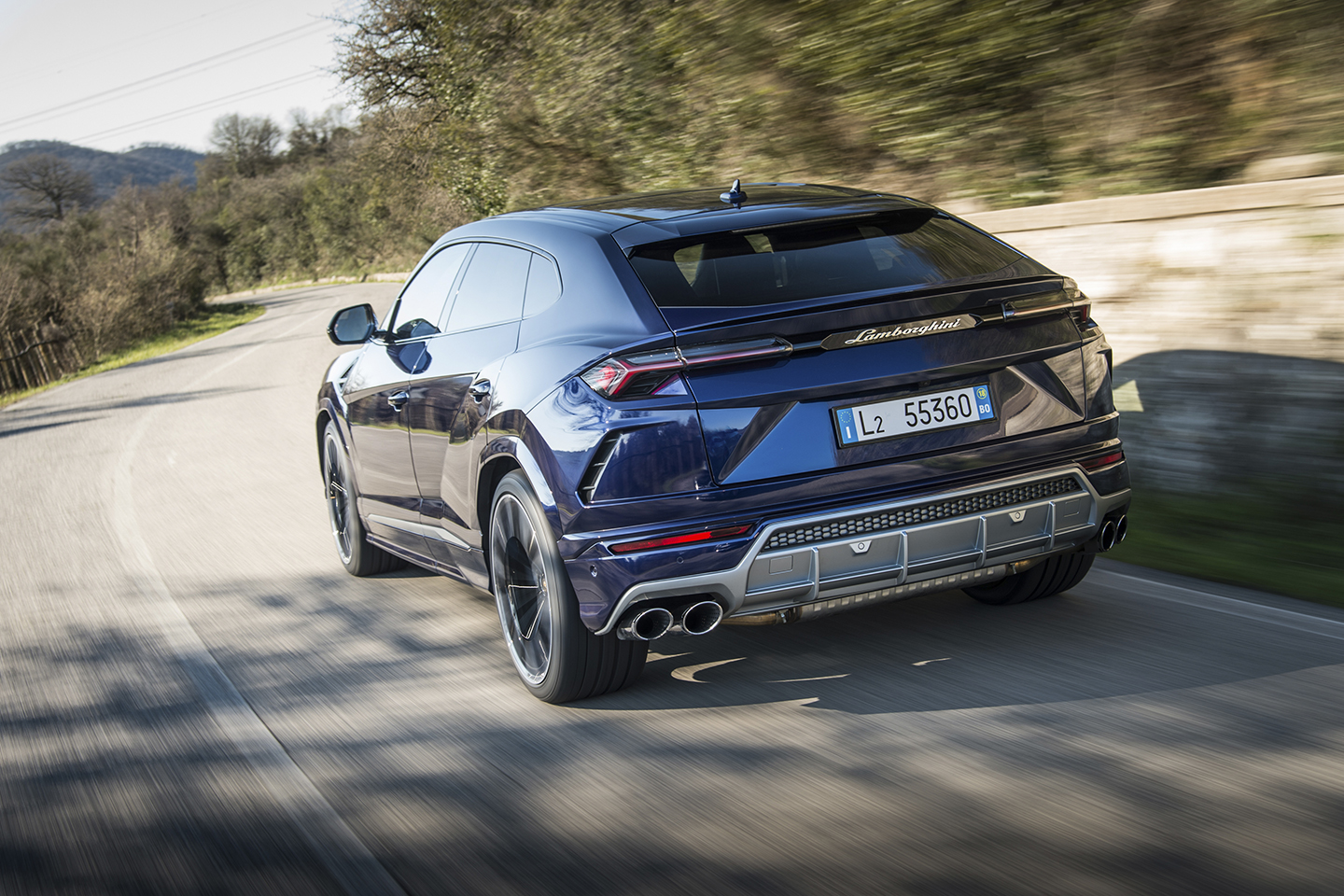
As an aside, the Urus was the first Lamborghini to be simultaneously launched in right and left-hand drive formats.
If Lamborghini had moved into the SUV business a few years earlier than they did, there probably would have been two outcomes. The standing and credibility of SUVs might have been dragged up by Lamborghini’s involvement, and the standing and credibility of Lamborghini’s brand might have been dragged down by it. But as in sport, where the difference between a good outcome and a bad one is largely down to timing, waiting for the right moment to launch the Urus produced the right result for both SUVs and Lamborghini.
At the end of 2019 a fourth scenario popped up: the announcement of the Audi RS Q8, dubbed ‘the Urus sleeper’. It too used the Touareg platform and the 4.0 V8. Bodily the Audi was less visually aggressive than the Lamborghini and had less aluminium in its construction, making it around 100kg heavier than the Italian variant. It had less power and torque too (600hp/590lb ft vs 650hp/627lb ft), so it was slower over both the 0-62mph run (3.8sec vs 3.6sec) and the 0-200km/h (124mph) sprint (13.7sec vs 12.8sec), but really we’re talking about the difference between stupidly fast and manically fast – a slim difference indeed. The 190mph top speeds were identical. Significantly the Audi was a lot cheaper at around £110k in 2020, compared to the Urus which started at a real-world figure of around £165k in 2018, six years after the first vaguely solid rumours of its impending arrival were suggesting an opening price tag of £135,000.
Sure, the two cars weren’t the same, but what differences there were hardly seemed to justify an uplift of over 50 percent for the bull-badged car. It just went to show the value that could derive from a name. The value of that name became even more obvious in the used market. The current (August 2022) retail price of a new Urus is just under £178k or £192k for Pearl Capsule spec, but the 12-months-plus wait time for any new Urus has resulted in a ballooning of used prices despite the relative profusion of this model in UK showrooms. The cheapest Urus we found on sale in the UK in 2022 was this 2018 car with 34,000 miles which only just scraped in below the £200k mark at £199,950. Low mileage ’22 and even ’21 cars are fetching £300k. Compare that to RS Q8s which rarely top £145k even for sub-1,000-mile 2022 cars. 2020 Audis with the same sort of mileage as that £200k Urus can be picked up for £92k.
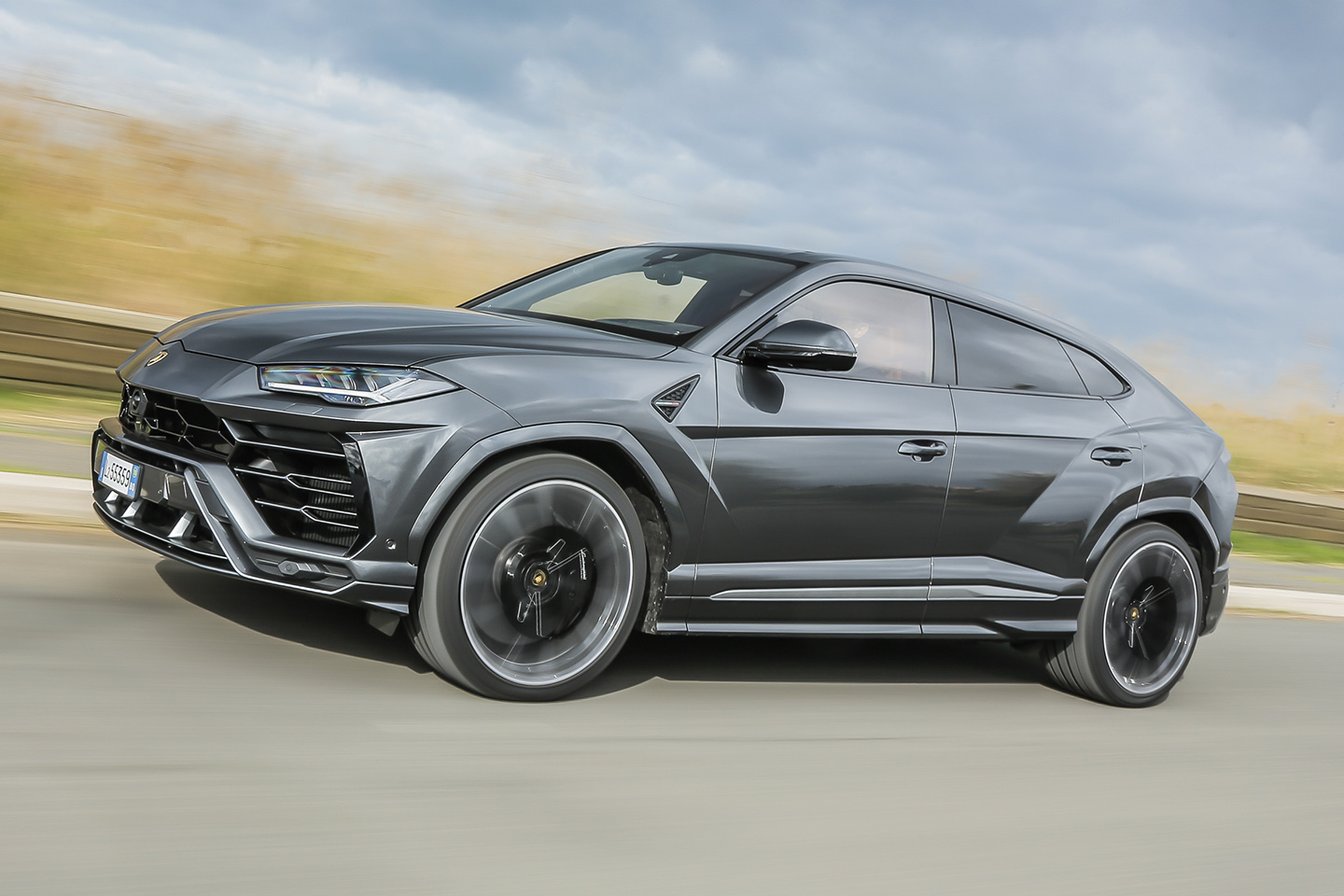
The gap between the RS Q8 and the Urus should grow at the end of 2022 when a new, more powerful, and possibly lighter version of the Urus aimed at competing more strongly with the 707hp Aston DBX 707 is due to be revealed. The retail on that is expected to be at least £200k. If the used price graph line we’ve witnessed so far is maintained, it wouldn’t be a massive shock to see delivery-miles Lamborghini SUVs going for at least £350k.
Will a phase 2 Urus be worth that sort of money? More to the point, are used current models worth their own elevated stickers? Let’s dive in and see.
SPECIFICATION | LAMBORGHINI URUS (2018-on)
Engine: 3,996cc V8 32v twin turbocharged
Transmission: 8-speed automatic, all-wheel drive
Power (hp): 650@6,000rpm
Torque (lb ft): 627@2,250-4,500rpm
0-62mph (secs): 3.6
Top speed (mph): 190
Weight (kg): 2,197
MPG (official combined): 23.0
CO2 (g/km): 279
Wheels (in): 9.5 x 21 (f), 10.5 x 21 (r)
Tyres: 285/45 (f), 315/40 (r)
On sale: 2018 - on
Price new (2018): £160,000
Price now: from £200,000
Note for reference: car weight and power data are hard to pin down with absolute certainty. For consistency, we use the same source for all our guides. We hope the data we use is right more often than it’s wrong. Our advice is to treat it as relative rather than definitive.

ENGINE AND GEARBOX
The Urus was not a small vehicle. Even by the most conservative estimates it weighed nearly 2.2 tonnes. Less kind estimates put it at nearer 2.3 tonnes. Fortunately the 4.0 twin turbo V8 engine had 650hp, which was more power than it had in the RS Q8 and Cayenne Turbo. True, it didn’t have a classic normally aspirated V12 Lamborghini engine, but it sounded angry enough with the exhaust valves open and the digitised din blaring through the speakers. Aftermarket systems were available if you wanted something even harder-edged.
Not everyone rated the look of the Urus but there was no arguing with the violence of the pickup from just about any speed. The ZF trans was set up for performance in the bottom six ratios and cruising in the top two, so at vaguely normal speeds the acceleration was staggering, not just by the standards of a 2.2-tonne SUV but by any standards. 0-100mph came up in under eight seconds. Start-stop was standard, but once you’d started you didn’t want to stop, whether you were a speed-crazed nutcase or a parent taking the kids to school.
The reliability picture for the Urus has been rosy. In December 2020 there was a recall for 2019 and 2020 model year Uruses due to a perceived fire risk caused by the softening of quick connector materials in the fuel line in high engine compartment temperatures. In spring 2021 it was found that cracks could develop on the cylinder bores as a result of a misalignment of the block casting stamp (a process which was apparently carried out outside the VW/Audi group), but it only affected 12 cars in total, four of which were Uruses built in a two-week period in October 2020. But that’s about it on the common problems front.
Servicing? Go onto HR Owen and their servicing page tells you that ‘because you know the costs up front, you can relax’. It then gives you an annual and major service costs table for all the Lamborghini models. The cost for every single one is given as ‘£POA’, which is very much the opposite of relaxing. Fortunately, Grange (another official Lamborghini dealer) at Chelmsford and Tunbridge Wells do give you prices. For the annual service, which involves new engine oil and filter, new brake and clutch (?) fluid, a wheel alignment check and a general safety lookover the cost is £1,074. For the major service, which adds new spark plugs, a new air filter and new transmission oil, the cost is £2,358.
Normally we would try to give you a comparative quote from an independent specialist, as these are always cheaper than official dealers without necessarily being any worse, but unfortunately none of the UK indies we identified felt able to publish their online prices.
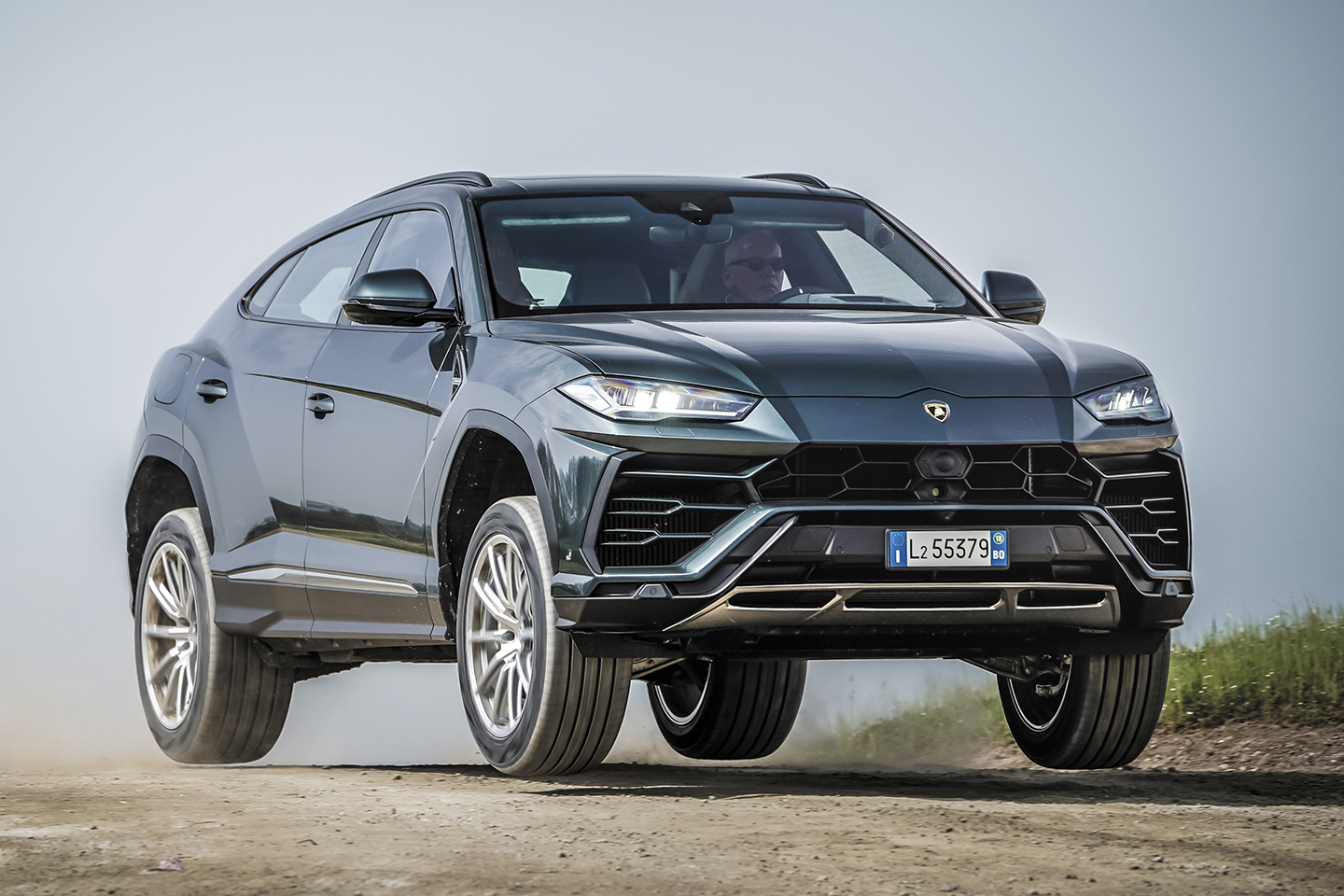
CHASSIS
Chassis-wise VW Audi threw the whole shooting match at the Urus, with active air suspension, an active limited slip rear diff with torque vectoring, rear-wheel steering and active anti-roll bars to minimise lean around corners. The steering didn’t give you Integrale-like feedback about what was happening at road level, but in combination with the 4WS and the ARB system it was fast and accurate.
Although the Urus was fiercely quick when required, it was designed to be driveable by anyone and at any speed. Put it in the softest Strada mode and you could amble about happily all day without a care in the world, with the car’s two-metres-plus width being your only concern in tight urban environments, multi-storey car parks and Channel Tunnel trains. Even in snap, crackle and pop Sport mode the ride was acceptable. The Ego custom mode lever provided three settings for the adaptive dampers, so it was usually possible to find a decent choice for any given conditions.
The smallest standard wheel measured a not inconsiderable 21 inches, staggered front and rear by rim width (9.5 and 10.5). If ultimate body-to-wheel clearance wasn’t an issue, which to be fair it probably wasn’t to the vast majority of buyers, the arches could even take 24-inchers. An off-road pack was available. This added 40mm of ride height and two additional driving modes.
Brakes were carbon ceramic as standard. Unlike some CC setups the Urus’s worked fine even when pottering. The 440mm discs at the front were the largest ever fitted to a production car at the time. The front calipers had ten pistons, with six at the back acting on 370mm discs. Standard tyres were Pirelli P Zeros. Not unusually for a staggered-wheel car, there was no spare tyre.
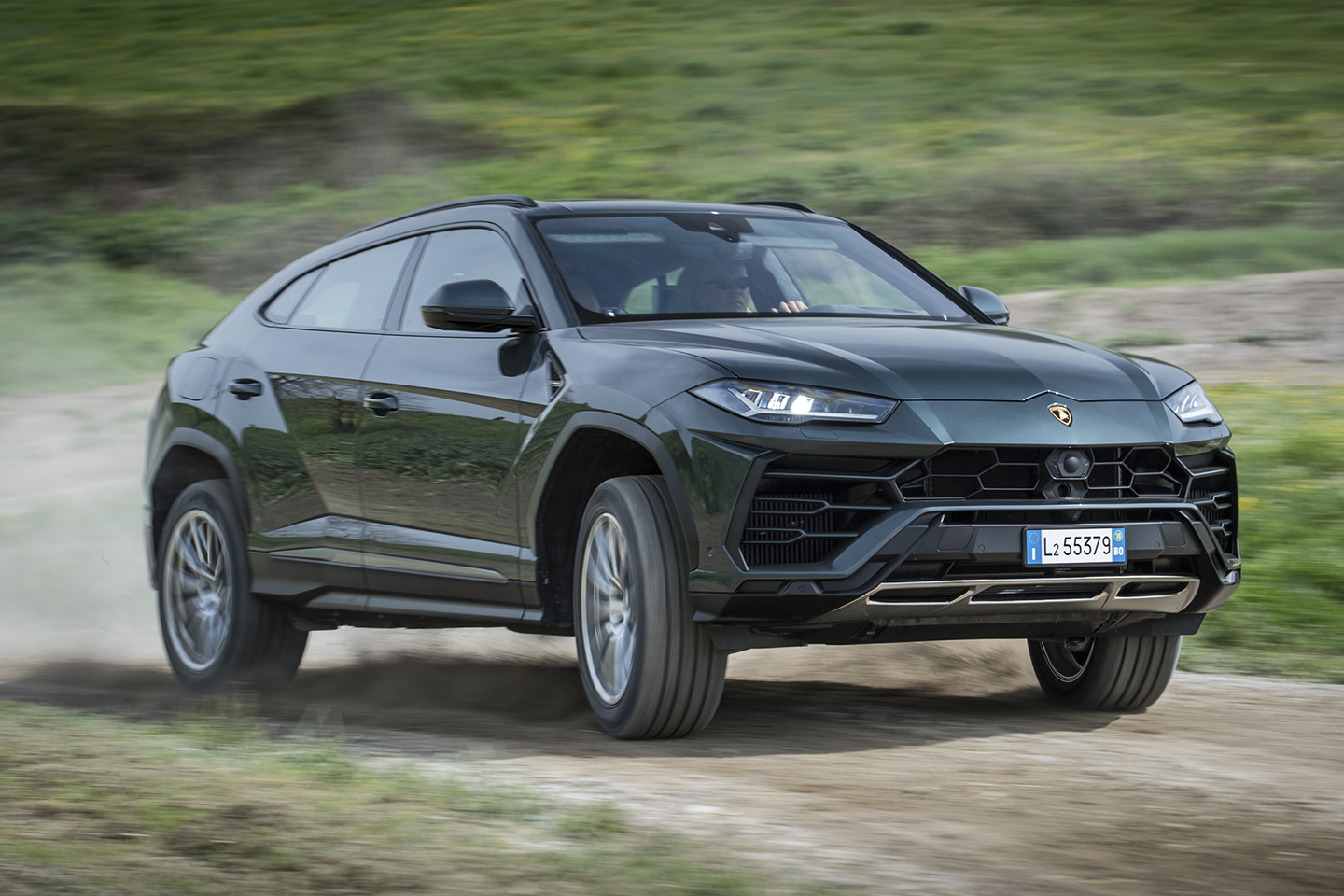
BODY
From the front the Urus bore a close resemblance to the Aventador, albeit a double-chinned one. Thick pillars and shallow, frameless windows (heavily raked at the back) didn’t help visibility much, but the big door mirrors clawed back a few points. Soft-close doors were an option, but we think these had to be organised at your dealer. They weren’t a factory fit thing. There have been instances of these sticking. Sometimes the windows didn’t drop down slightly when the doors were being closed.
Gesture control was an option for the electronic tailgate. A ‘kneeling mode’ button in the tailgate opening let you lower the entire car for easier loading of your bags into the seats-up space of 616 litres (which was slightly smaller than that of the Aston DBX). This rose to a creditable 1,600 litres with the seats down, which was about 100 litres short of rivals. The car’s width did at least mean you could get two golf bags in there for that trip to the scrap metal merchant.
Not everyone was a big fan of the slightly cheap looking silver side trim pieces and diffusers front and rear.
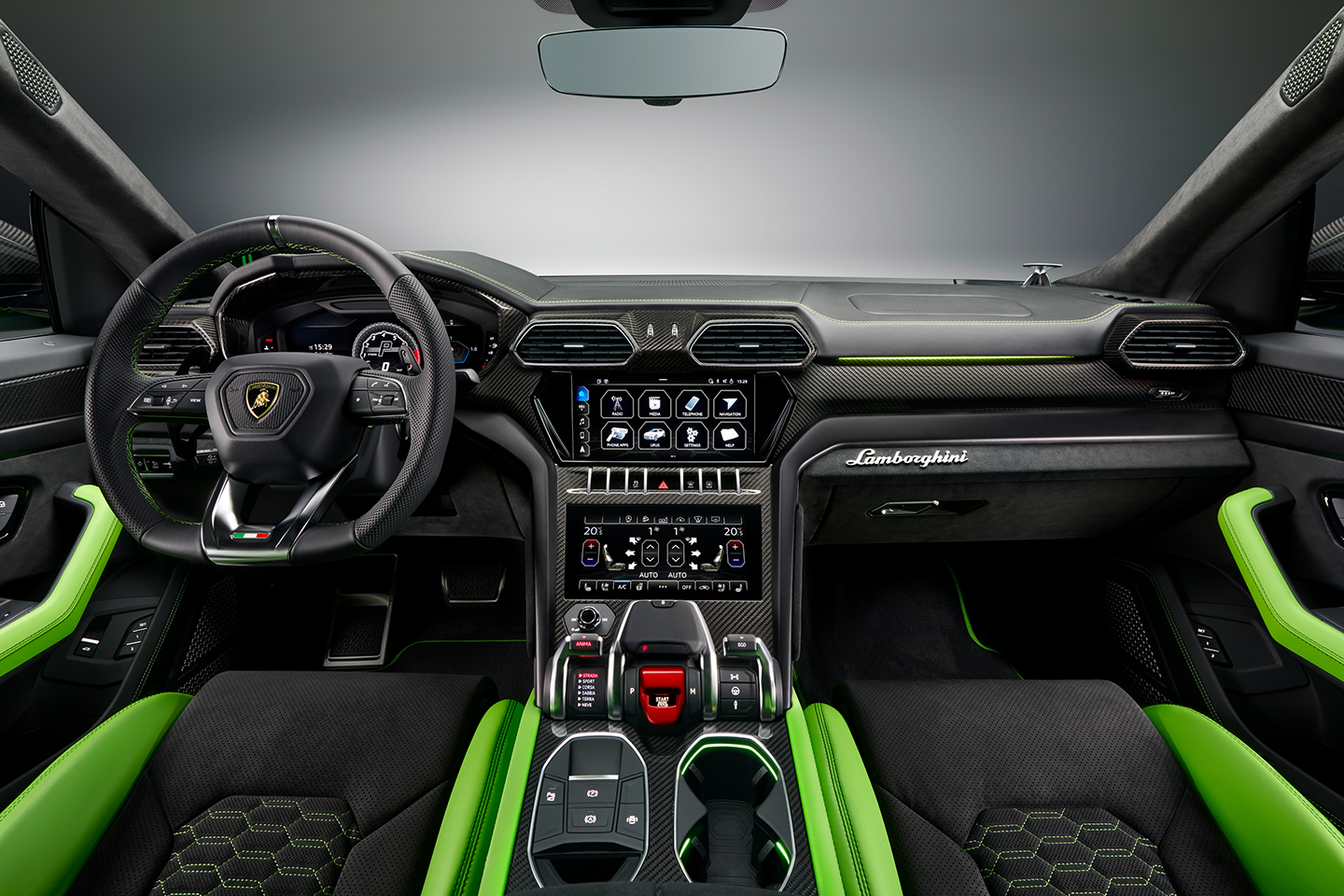
INTERIOR
When it came to the cabin, a deal of care went into the Urus to make it blindingly obvious that you were in a Lamborghini. The brand-recognisable ‘Y’ theme greeted you on entry, the width of the centre console putting you in mind of the LM002, but unlike that beast it didn’t feel intimidatingly large from the driver’s seat. There were three screens, one for the instrumentation, one for the LIS III infotainment and one for comfort functions, including a virtual keyboard feature with handwriting recognition. Wonder how many Uruses were bought by doctors? Whatever, the central touchscreen was easy to use and there was haptic feedback, so you knew that the thing that you wanted to happen had happened. There have been reports of the screens occasionally darking out though.
In terms of materials there was Alcantara and aluminium aplenty, hexagons all over the place, and acres of leather with more stitches than Leeds A&E on a matchday night. Altogether it wasn’t quite as Lamborghini-ish as other models in the range, all the switchgear (plus the aircraft style panel at the top of the windscreen) having been taken straight from the Audi parts bin, but you might see that as a good thing. With the Bang & Olufsen audio fitted – a desirable option at £5,250 – sculpted tweeters rose theatrically out of the dash top.
Naturally you had Bluetooth, satnav, and four-zone digital climate control, but we think that digital (DAB) radio was actually an option on early (pre-2020MY) cars, which if true seems a bit mean. Ambient lighting was another option but the effects were quite subtle so a used car shouldn’t be discounted just because it doesn’t have it. Many of Lamborghini’s ADAS (Advanced Driver Assistance Systems) functions were standard in the Urus but there were a few options that were worth having like the 360-degree top-view camera and trailer coupling pack. Night Vision was a very useful thing. Front and rear parking sensors were standard, as was high beam assist. The cupholders in the centre console were a bit rubbish. Mind you, Lamborghini reportedly charged over £3,000 for a cupholder on the Aventador SVJ so perhaps we should be grateful.
The electronic front seats felt sportily low for an SUV whilst actually being high because, well, it was an SUV wasn’t it. Massage seats were a nice option. The pedals were slightly offset to the right so make sure you take a good test drive before you commit as this sort of thing can really crock your back, especially if you have issues in that department. There was decent kneeroom for up to three rear-seat passengers. In fact the rear compartment was comfy enough for children and smaller adults, especially when the box for the £4,500 entertainment package had been ticked, but there was no getting away from the physical limitations imposed by that sloping roofline.
Surprisingly, the standard car did not have electronic operation for rear seat folding. The central seatback section in the 40/20/40 split could be folded away for loading longer items with four bods on board. A four-seat layout was available to order, giving two luxurious buckets and a centre console with storage, climate controls, two more rubbish cupholders and a connection to the LIS III infotainment system.
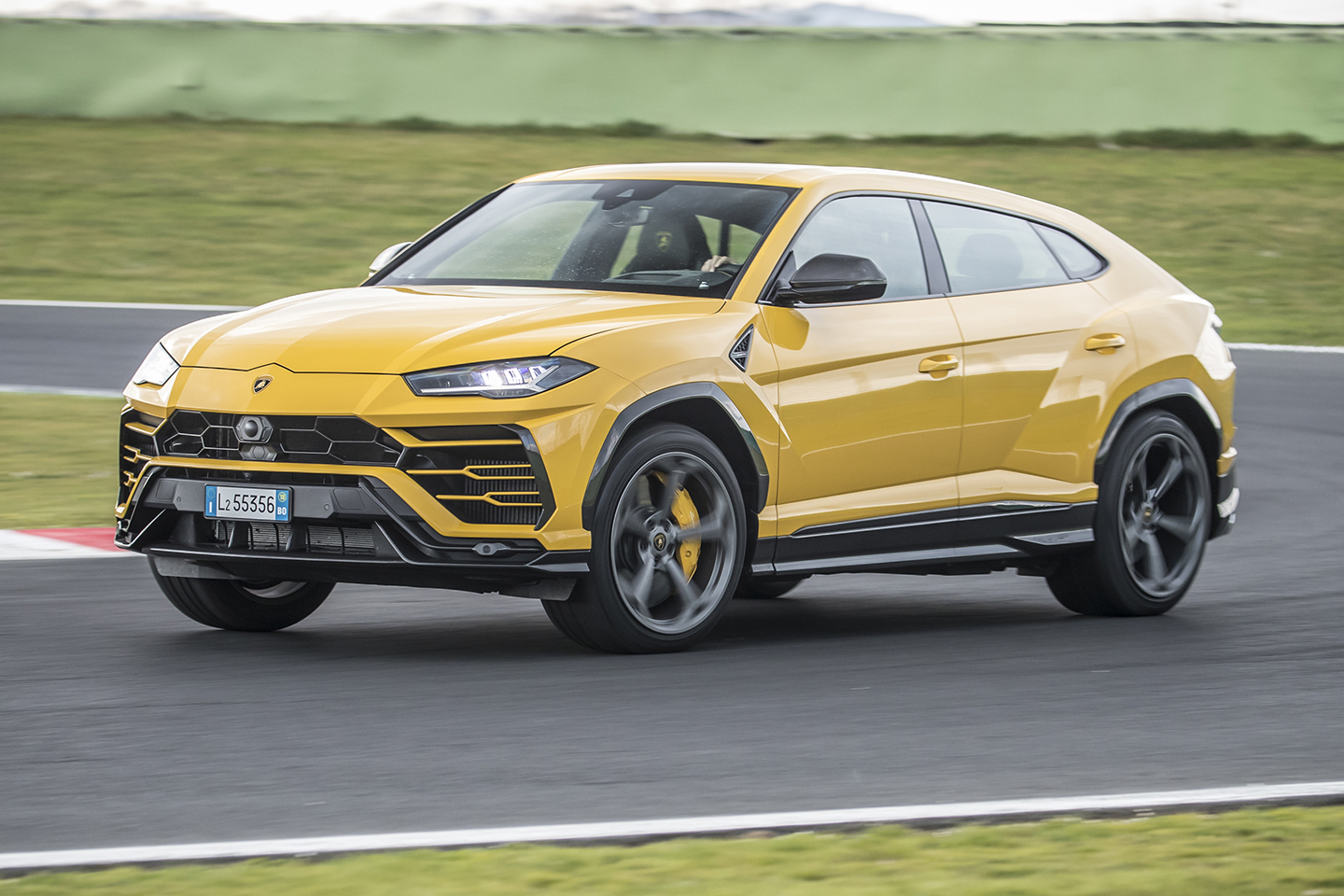
PH VERDICT
There’s some truth in the view that the Urus identifies more strongly as an SUV than a traditional Lamborghini. Given its non-traditional drivetrain, that’s hardly surprising, but in the highly unlikely event of an Urus being the only vehicle in the household there’ll be more than enough Lamborghini-ness to go with the cargo and passenger-carrying attributes you expect from an SUV. Why, you could even use for towing. American Lamborghini dealers were claiming a rating of 7,000lb, which is nearly 3.2 tonnes. In the UK we think it’s probably under 2 tonnes but that’s still enough to tow pretty much any caravan. Could this be the next brand offshoot? Stranger things have happened, and these are strange times we’re in.
We shouldn’t get too wound into the ‘SUV or Lamborghini’ semantics. By any objective standard this is a fantastic vehicle whose all-round appeal has been seen and understood by more than enough people for it to have become a huge success. In early 2022 Lamborghini revealed that the Urus accounted for over 5,000 of the record total of 8,400 cars sold in 2021, a year that generated close to £2 billion in turnover and better than 20 per cent profitability. Just like the Cayenne for Porsche, the Urus has given Lamborghini a rock-solid financial base. Even if the only consequence of the Urus’s existence was a guaranteed continuation of Lamborghini supercars then it would have been worth it, but the fact is that the Urus offers a lot more than that. Any misgivings you might harbour about its Alderley Edge image vanish when you get your first taste of the performance and handling.
The only possible argument against the Urus is the presence in the marketplace of the not massively different Audi RS Q8 at two-thirds of the price, but the power of the Lamborghini badge renders that comparison irrelevant, and the proof lies in the firmness of secondhand Urus prices in spite of the number of cars available.
At the beginning of this piece, we told you about the £200k entry qualification and linked you to one of only a couple of cars that were coming in below that price at the time of writing (and one of those two was sold during the preparation of this piece). The best Urus value right now seems to lie in the £215,000-£225,000 bracket, inhabited as it is by a decent selection of cars with under 20,000 miles.
If you want to be seen, here’s a bright yellow 9,000 miler at £220k on the nose. Most Uruses come in sober colours with visual relief coming in the cabin or the wheel/brake setup. This 12,000-mile 2019 car in black with red accents is a fine example of that at £225,900.
See every Lamborghini Urus for sale
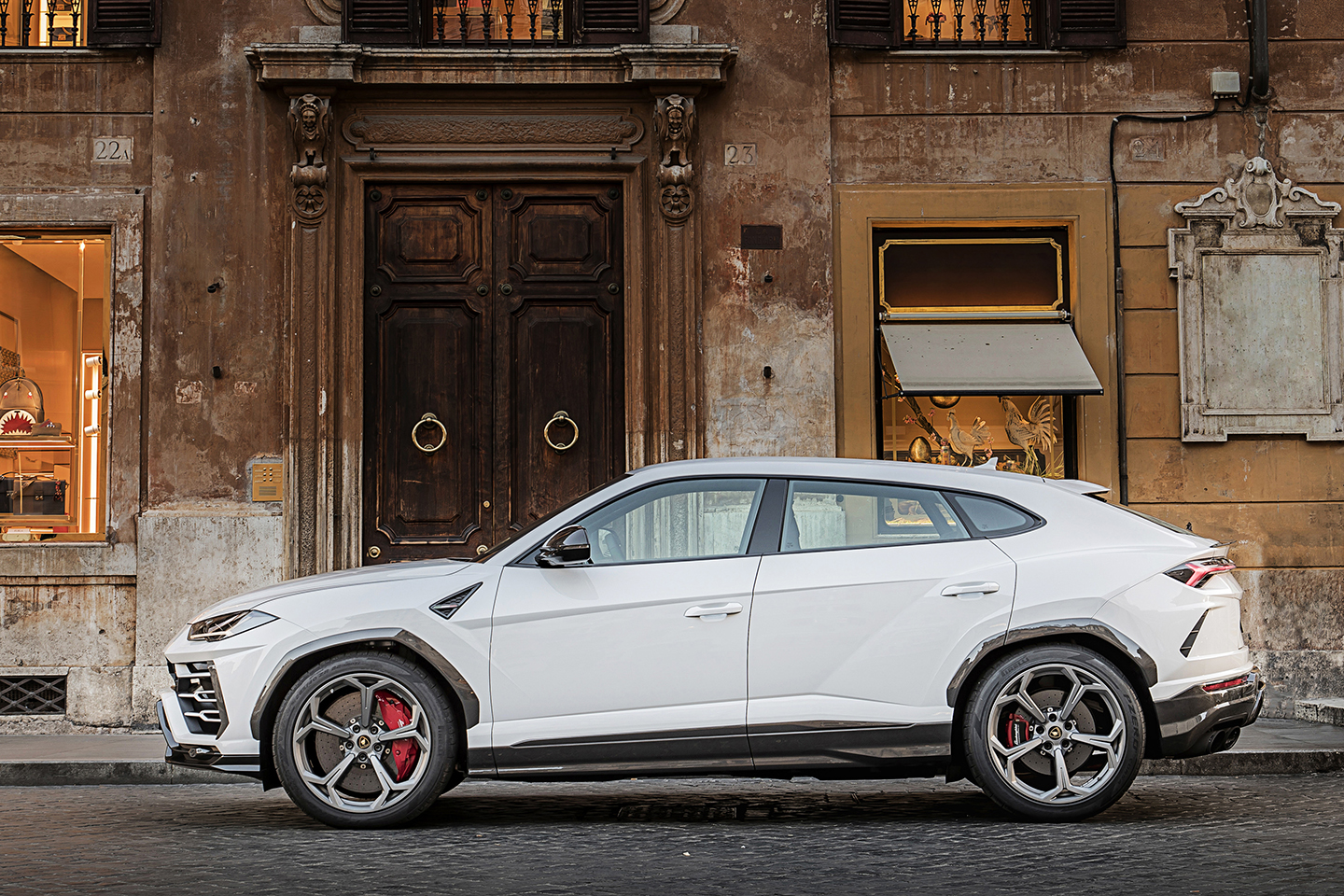

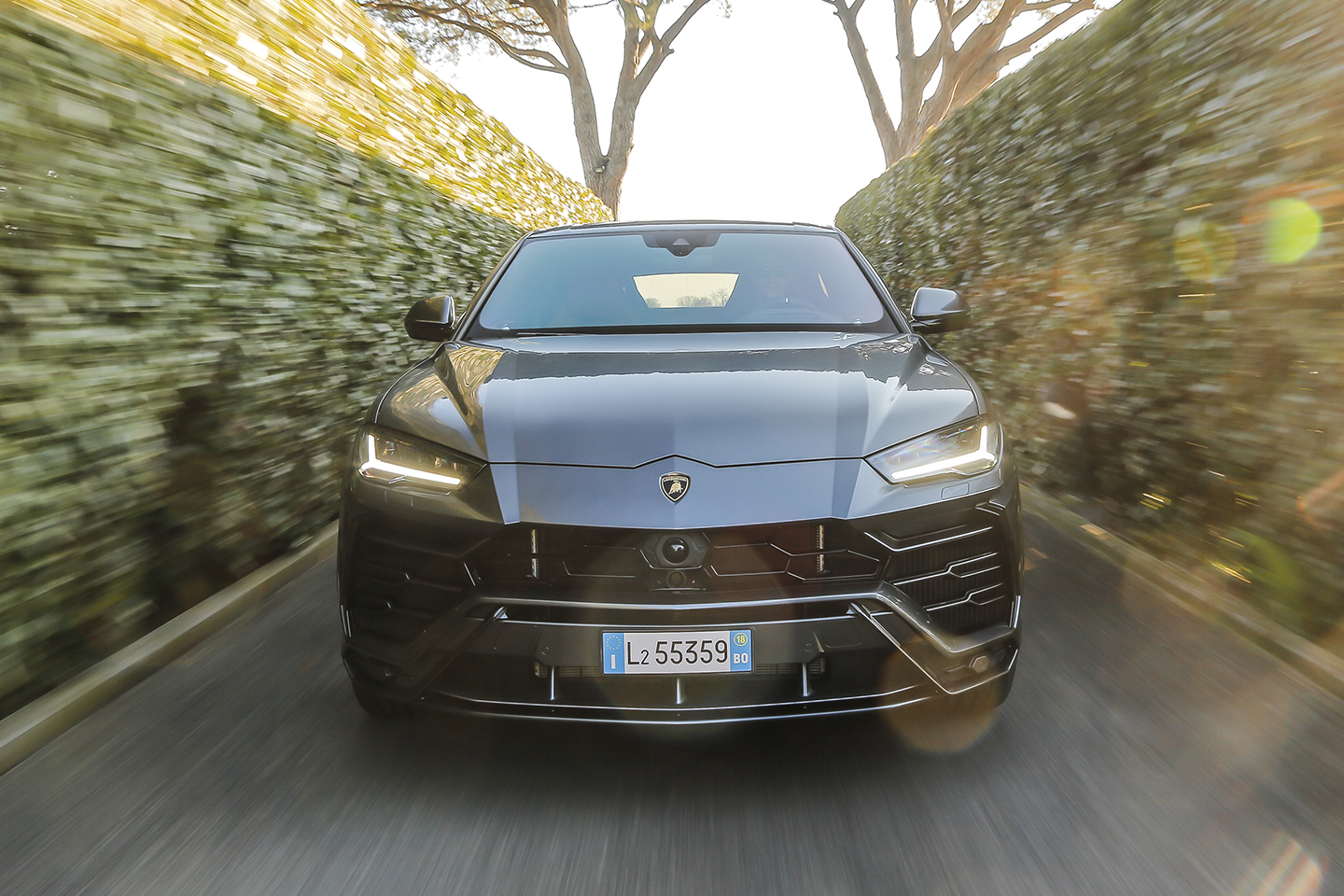

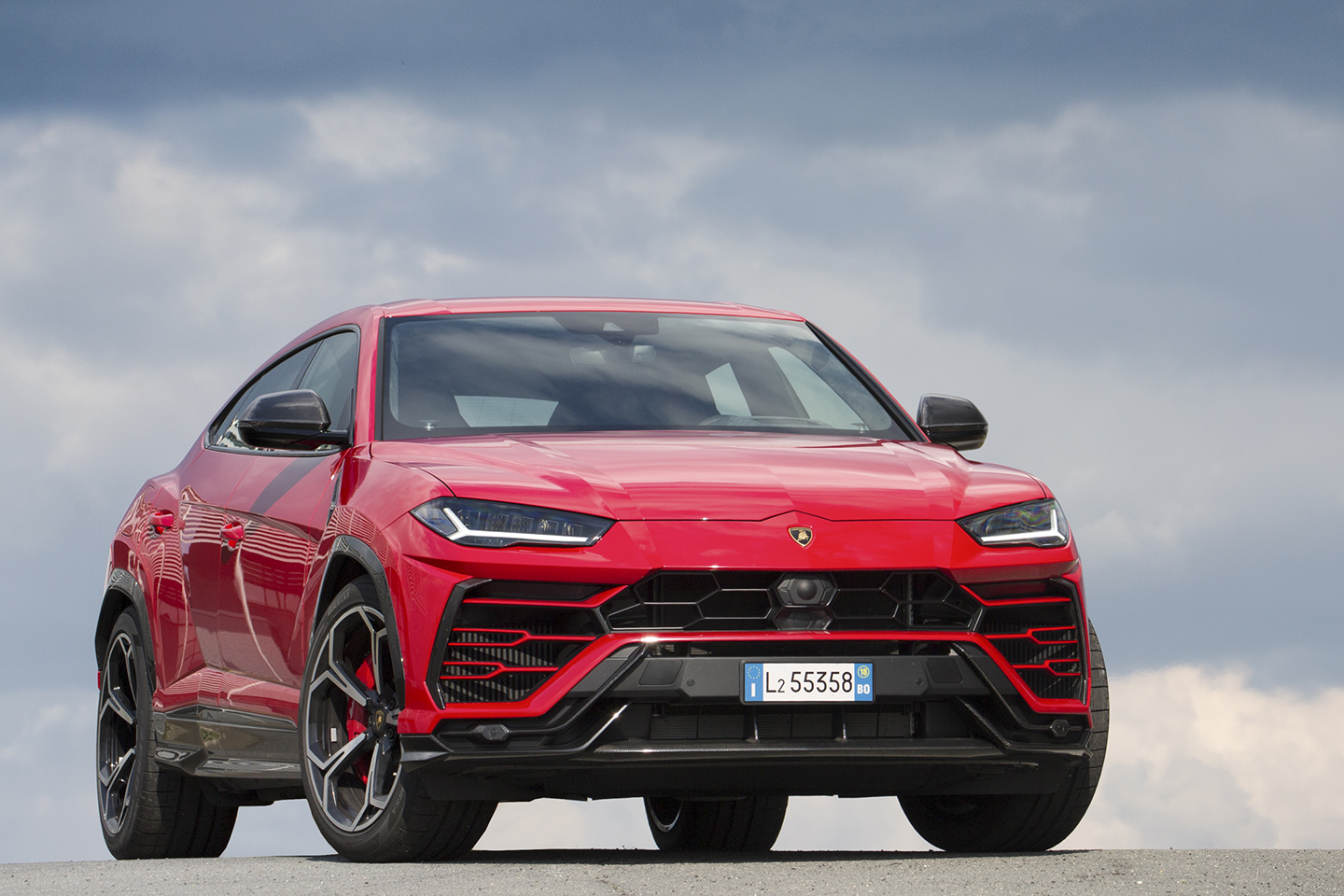

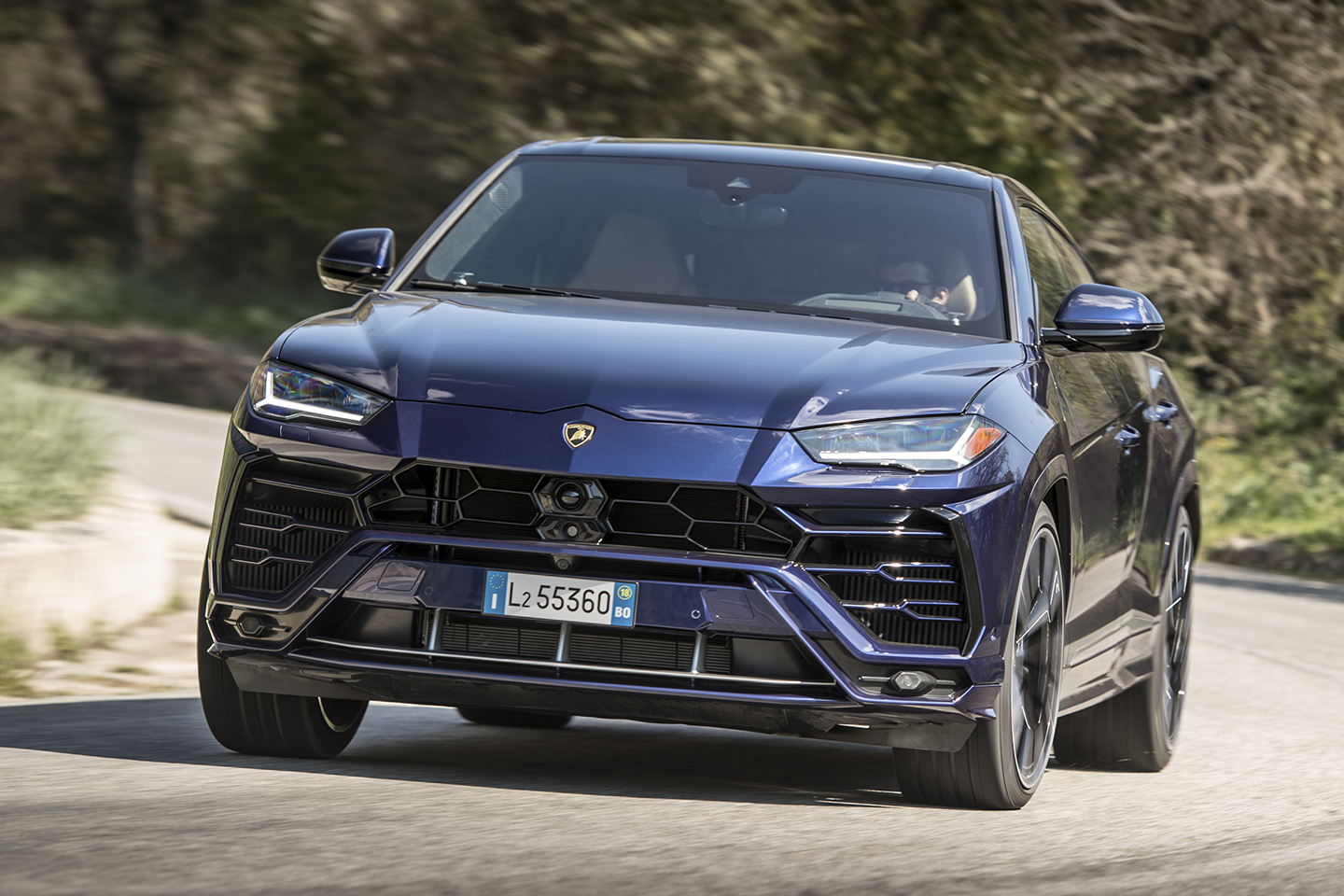
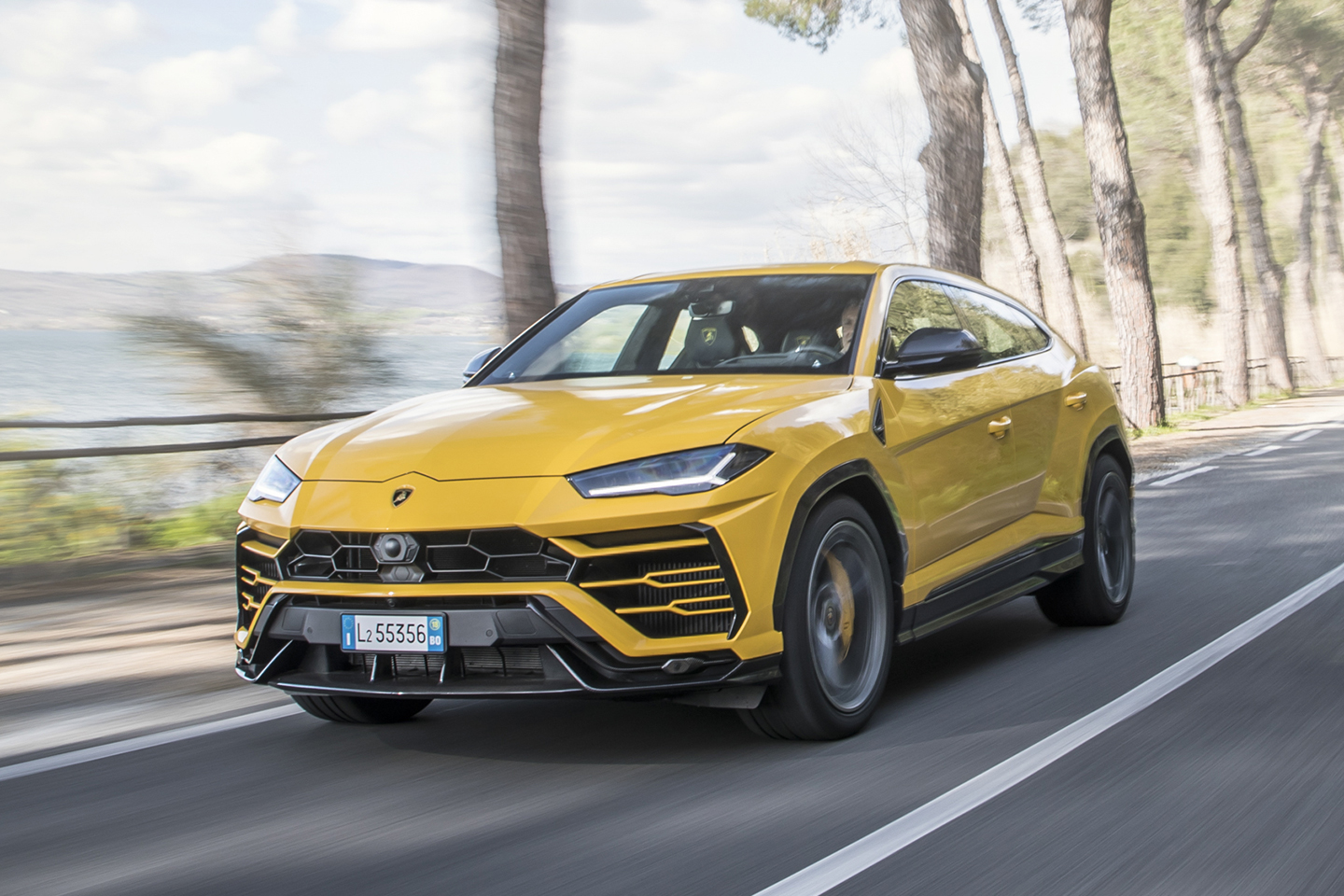
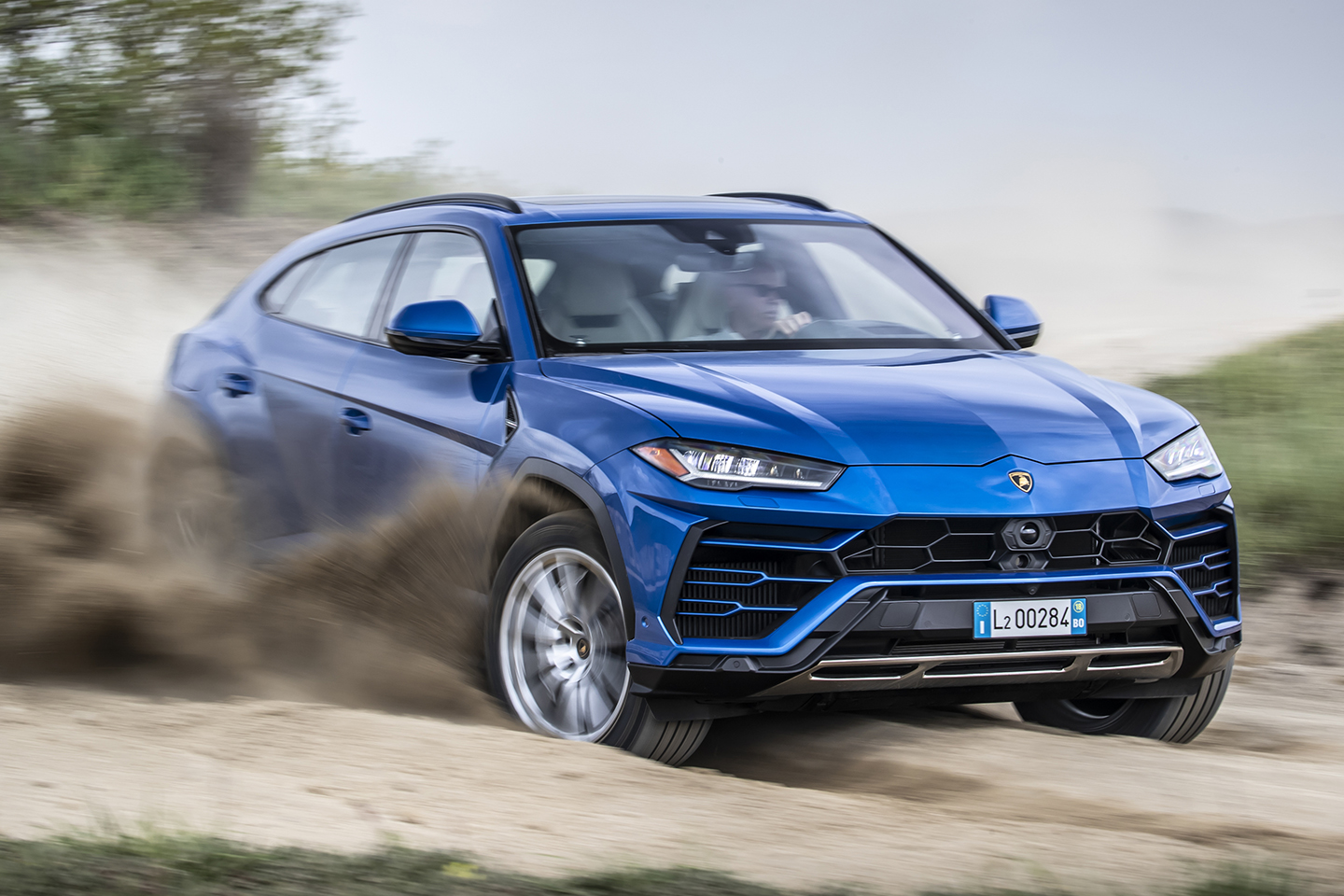
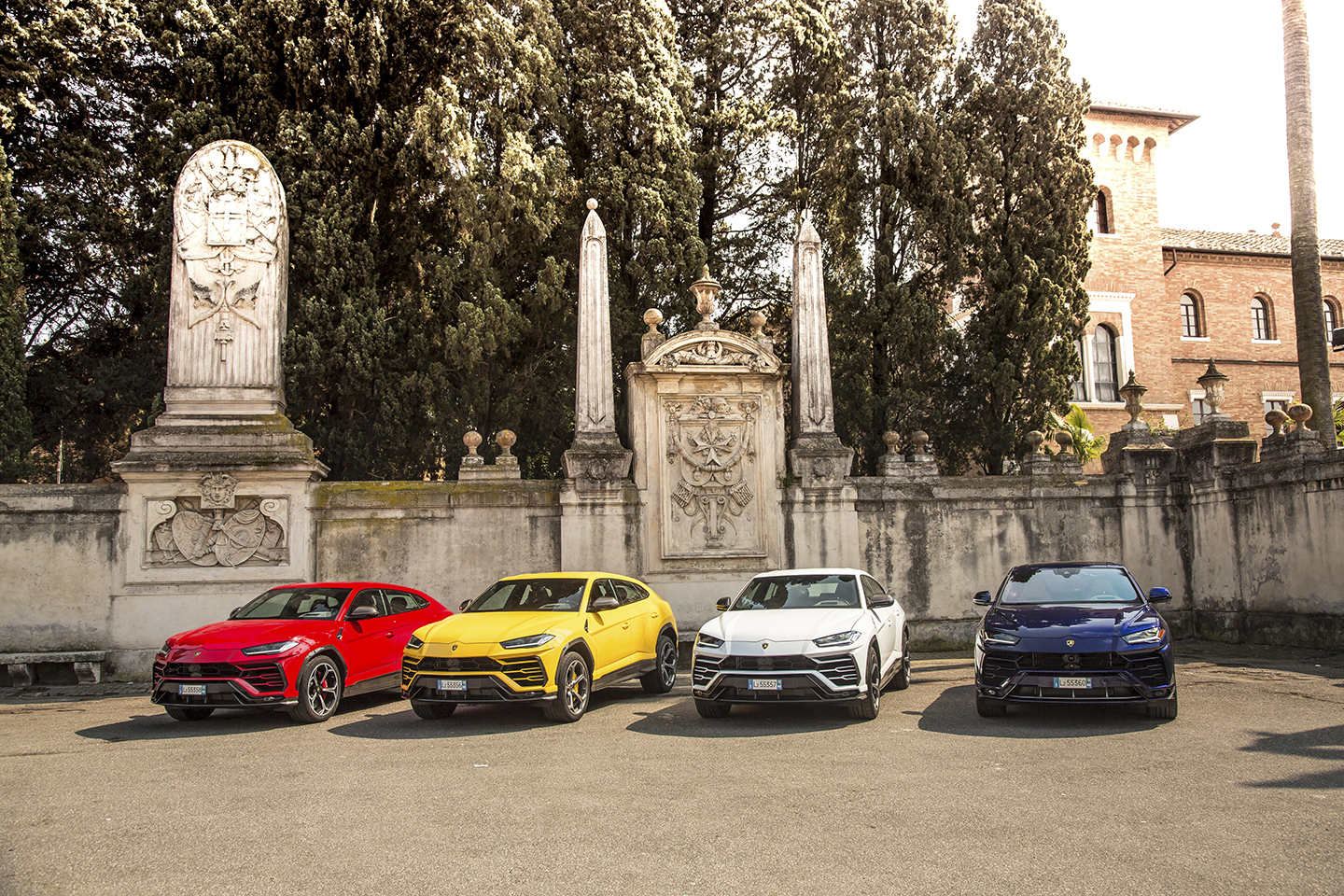
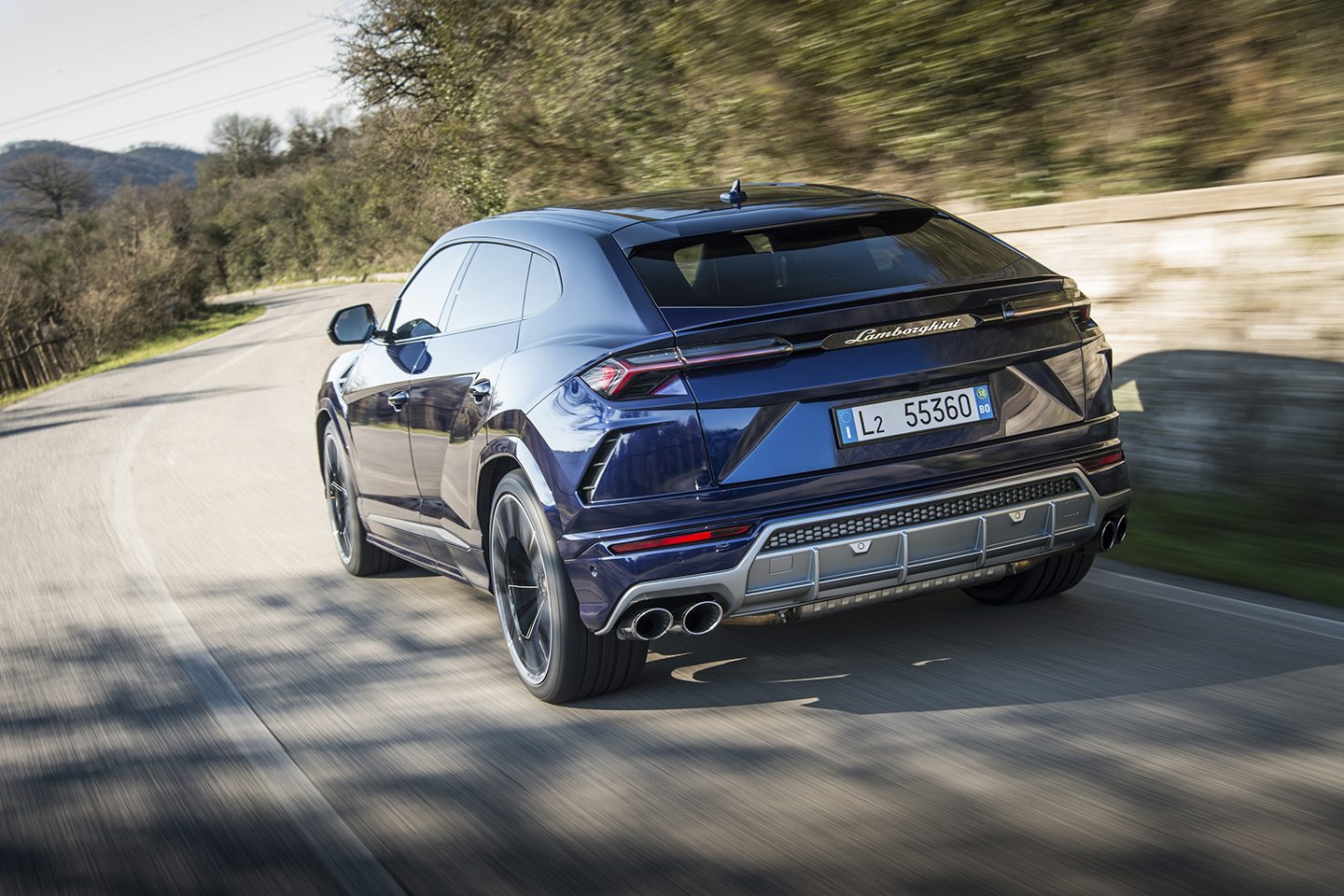
But I'm sure buyers love them, the factory employees love churning them out as a high profit per unit platform sharing exercise and the VAG boardroom just laughs whilst watching the money pile up in the corner of the room saying "told ya they'd buy 'em", so my views are irrelevant.

Imagine the discussions when vw first purchased Lamborghini. I was mystified, why would mass market successful vw buy a failing maker of niche super cars when they already had Porsche on the balance sheet?
It’s just down to badge engineering… so they can sell an R8 for 50% more, and better still, sell a toureg for 200% more
Imagine the discussions when vw first purchased Lamborghini. I was mystified, why would mass market successful vw buy a failing maker of niche super cars when they already had Porsche on the balance sheet?
It’s just down to badge engineering… so they can sell an R8 for 50% more, and better still, sell a toureg for 200% more
Either way quite shocked to see these are almost 20% over list of a new one for a used one

It looks like a massive aventador
650 bhp
im sure very well put together
im sure very nice to drive (for an suv)
If you don't like suv's thats fair enough but some people do, they clearly aren't a sports car but a car that can carry the whole family in luxury and is a different proposition to the range rovers and cayennes.
I would imagine the vast majority are owned by people with about 10 other cars already.
The cost of them is eye watering tbh i will say that.
Strange one near to me though.
Totally normal although nice 4 bed house. Outside sits a porsche panamera which is relatively new so not an old dog and also a urus. the two cars must be worth 75% of the houses value.
I find it an odd combo of cars in that house, surely if you were a proper petrol head and were willing to spend that type of money on two cars then you'd have something like a cayenne turbo and a huracan for fun. not an suv and then what is also like an suv but not as high up.
Imagine the discussions when vw first purchased Lamborghini. I was mystified, why would mass market successful vw buy a failing maker of niche super cars when they already had Porsche on the balance sheet?
It’s just down to badge engineering… so they can sell an R8 for 50% more, and better still, sell a toureg for 200% more
Still it leaves a bargain market for the shrewd.
I have an R8 :-)
P.s. I'll bet a simple remap makes the Q8 performance match the lambo, same as the R8 V10 .
Personally I love the Urus' success, and in particular those residuals, which (as I said on the Bentley profit announcement thread) just goes to show how brilliant VW are at brand management; certainly they're better at it than anyone on here could ever hope to be.
Gassing Station | General Gassing | Top of Page | What's New | My Stuff

